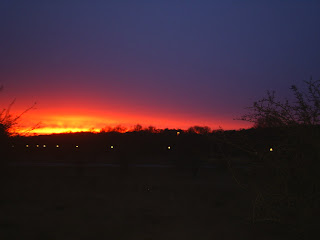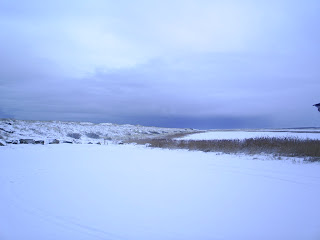What is maritime archaeology and what is to be done in Virginia?
When you are taking graduate courses one often forgets that one is part of a larger community of academics and scholars as well as practitioners. It is with these thoughts that I remind myself that I am not undertaking the task of earning my degree in the field of maritime archaeology as per the common reasons; adventure, personal gain, objects, or ego. I can remember being a small child and having the luxury of being homeschooled and free to travel throughout the state became immersed in the culture of it. It is with this that I have and still remain rendered with what many would call a regionalist love for my home- the Chesapeake region. My love for the conservation of objects of cultural heritage began at an early age with my father teaching me clock restoration in the manner of his father’s old world traditions and having my mothers insistence that I learn the history and the landscape they where part of.
The object reminds us of our past which is the reason why it is so powerful as a tool- anyone who has been to the Mariner’s Museum and seen the screw or turret of the USS Monitor will be thrown back in time to a preceding conflict. All human experience however, is rendered perceptually different to the individual based upon culture or class or a whole host of other reasons. Only a handful of people would appreciate the loan ballast pile of a slave ship for the memory it records; while millions go to see the Vasa every year. This is the paradox which confronts us. People are different and value things differently, or in some cases not at all. The key will be to teach and inspire the next generation of maritime archaeologist, local historians, and local interest groups to support the protection of cultural heritage; for the only solution to this problem is to allow the passionate in each field to protect that heritage which they feel a connection with; while the State and Federal levels provide protection for objects and places too big or overlooked in this manner.
The topic of preserving Virginia’s submerged cultural resources is not a new one. It goes back to the greats of nautical archaeology such as Dr. George Bass and Dr. John Broadwater who with connections gave impetus to the movement in the 1960’s and 1970’s. But all too often the little people are forgotten. It is easy to look up to someone who has a graduate degree or a published book, and rightly so, but at the end of the day my hero’s are still those individuals usually of middle class who volunteer at digs because they want to see their history and by doing so become part of it. To them falls the burden of reading the books by maritime archaeologists, but when we write them shouldn’t we think about including them? I have started this society because I believe that there is too much division in Virginia in the archaeological community in regards to submerged cultural resources. We have great and talented people who are all striving towards the preservation of submerged and terrestrial maritime heritage in Virginia in one facet or another. However, there still is limited outreach to other organizations between agencies. This is harming Virginia’s submerged cultural resources by causing inaction in a discipline which requires prompt response times. I would argue that it hurts us almost as much as looting in the state of Virginia.
The purpose of the Virginia Maritime Heritage Society and Conservation Association as per my thought originally was an organization to bring everyone together. This means that a member of MAHS could share their information with a member of IMH, ASV, COVA or any other interested party or vice versa. The museums are welcome to participate in this and it would be clearly beneficial to the maritime archaeology community to begin to interact with their local history and nature museums. The same goes for historic structures such as plantations and ordinaries as well as domestic terrestrial sites which were linked through mercantilism to a global trade network during the colonial period that persisted through the formation of The United States of America as an independent nation. For those who are interested I will hold a meeting at the Green Leaf in Williamsburg, Virginia on July 10 from 5:35 to 8:35 in the evening. I assure you I will be there.
I do not know how many will attend or even consider attending. I personally have nothing to loose from buying a beer and enjoying the atmosphere of my favorite pub, but for those who would come I will detail some of the things I would like to discuss. Firstly, who should lead this group? I will be blunt, I am happy to try my best but I am no leader or social networker by any stretch of the imagination and have done this out of a perceived need for my region. Who would like to participate and how would we share knowledge with one another? This of course is the hard part of our business as looting is always an issue in our discipline. More importantly from my own heart is how will we disseminate knowledge? Should we have a newsletter in pdf format for all members? Should we feel obliged to do public school outreach to inspire the next generation? These of course are only the questions I have, we need many voices to bring answers but also to ask the questions we may have missed. The success of any organization has nothing to do with making the right choices, but in asking the right questions which take us collectively in the right direction.
For those already established in the discipline no matter what branch thereof, I am not here to step on toes or banter or rave. I don’t care who protects Virginia’s submerged cultural heritage as long as it goes through the State Archaeologist Mike Barber as well as necessary federal authorities. I also do not care who inspires the next generation of maritime archaeology in our children at schools as long as it is done with that goal in mind without the backing of a political agenda for one groups benefit. I do believe that if we as a discipline are going to have any measure of success of having the State of Virginia recognize the importance of this forgotten history to the commonwealth than we need to publish and showcase our work, but more importantly show that we are giving back to the community and not just taking advantage of history and heritage that only we lucky few get to see in person. I hope that if nothing else this makes others in the Chesapeake region feel as if they are not alone in wanting a source by which they can contribute-
Best,
Jason Lunze


















































